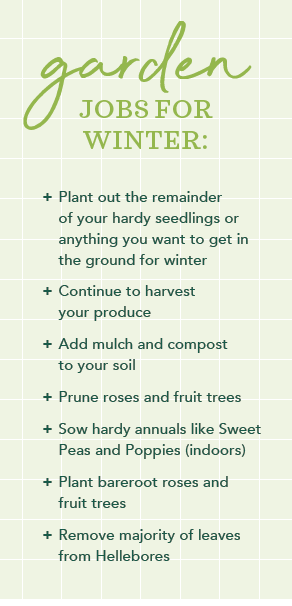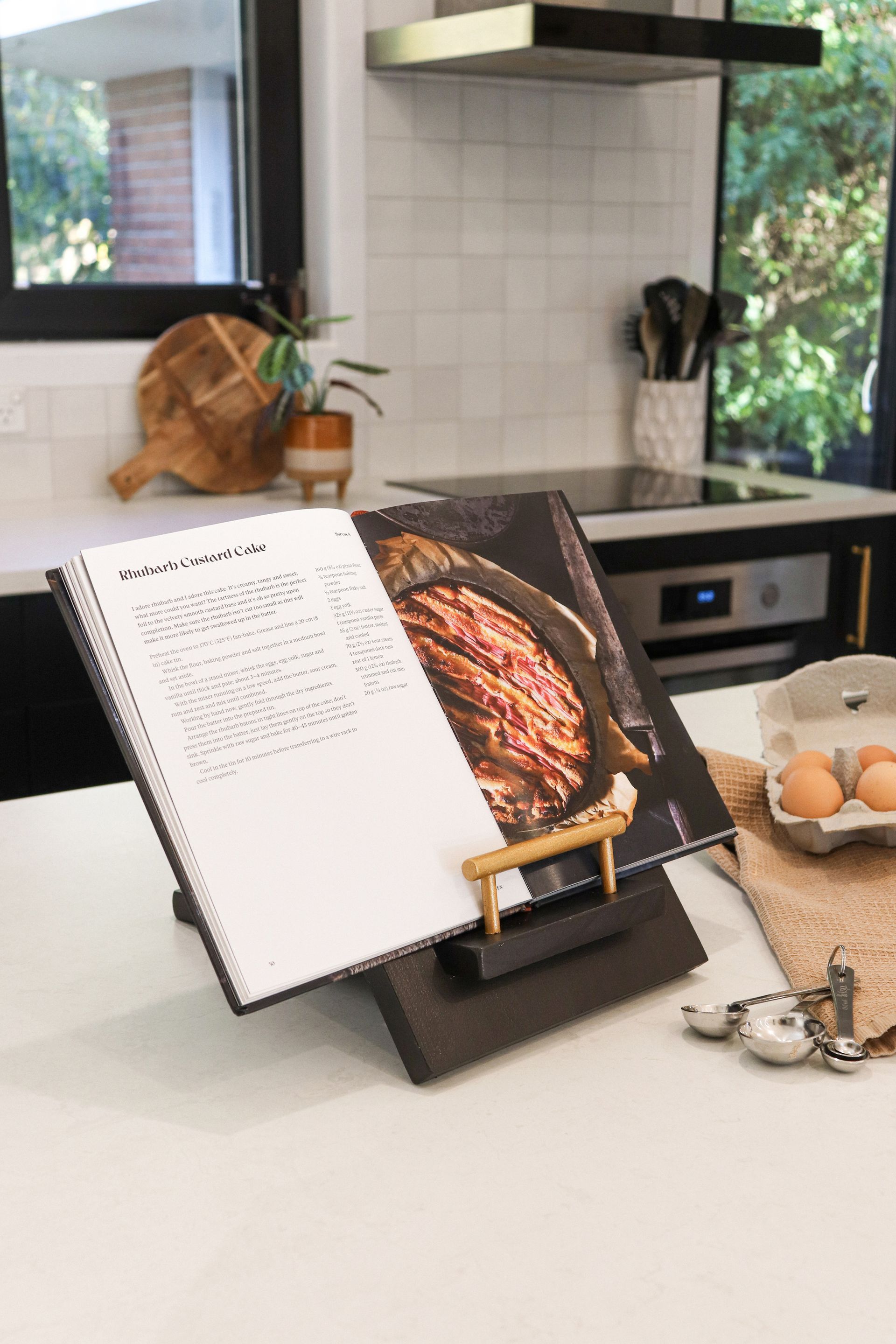Flora Brons of Flora Grow is here to guide us through the autumn months in the garden. It is going to be busy!
If you’re feeling down about your winter garden, just remember how many plants need this cold to produce big beautiful flowers and harvests for us in the spring and summer. It’s a great time to spend planning your spring and summer garden and do some seed shopping.
And don’t forget to search for all those plants we often don’t notice enough that are bringing us flowery joy in the winter. So, wrap up warm in your winter woollies and let’s get stuck in.

The benefits of winter
A lot of plants actually need the cold of winter and a dormant period where they conserve their energy and store it ready to bud in spring. Some examples are Peonies, Lilac and Grapes which won’t flower or bud well at all if they have not had enough cold. Also, a lot of plants do some serious work on their roots during this time. So, while it may not look like much is happening on the surface, there is plenty happening under there.
This is why it is so important to get compost and mulch onto your soil to not only reduce weed competition, but also to protect the roots and build up your soil.
Vegetables you can plant out now (if hardened off):
+ Onions
+ Celery
+ Coriander (direct sow)
+ Garlic (now until the shortest day)
+ Baby Spinach
+ Peas
+ Lettuce
+ Silverbeet
+ Beetroot
+ Kale
Flowers you can still plant out now (if hardened off):
+ Nigella
+ Orlaya
+ Scabiosa
+ Larkspur
+ Snapdragons
+ Poppies
+ Bells of Ireland
+ Mignonette
Microgreens
Don't fancy gardening in the cold but want to grow some food?
Microgreens are a great way to get some extra greens and nutrients into your meals. They are very simple to grow indoors and ready to harvest in just 7–14 days.
On these colder and dreary days when you don’t feel like having a big salad with your hearty lasagne, just add a handful of these on top and it will be sure to give it an extra punch of flavour and nutrients.
You will need:
- Small container with drainage holes (ice cream container with the lid as a tray is perfect)
- Seed raising mix or potting mix
- Microgreen seeds
- Spray bottle to water them
They don’t need full sun and will also grow on your veranda or porch through the winter too. For our full growing guide head to our Journal at floragrow.co.nz
Flowers in winter
We usually associate winter with a bare garden and not many flowers at all, so it can be easy to miss the subtle colours of the flowers that are brave enough to pop out in winter. Often it can be scent that will catch you first.
My favourite winter flowers are Wintersweet and Daphne. I love them both for their fragrance, they bring me so much joy at this time of year. If you are looking for winter interest, here are my top favs:
- Wintersweet (Chimonanthus praecox)
- Hellebores (Winter Rose Helleborus)
- Snowdrop (Galanthus)
- Camelias
- Daphne

With an agricultural degree from Lincoln University, along with an entrepreneurial mindset, Flora Brons was inspired to develop Flora Grow to educate and influence the community on sustainable living through her knowledge of plants and the ecosystem. Her passion for plants, nature and people drives her continued success. floragrow.co.nz
Recent stories







